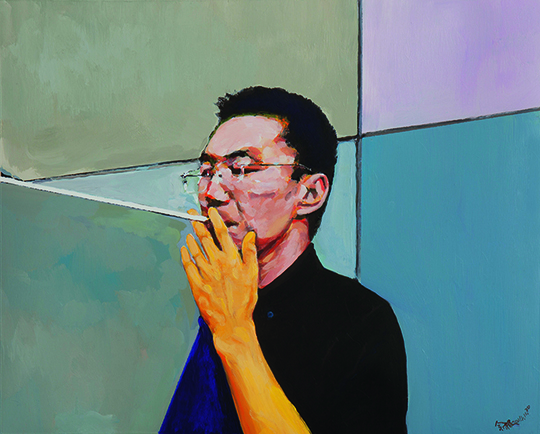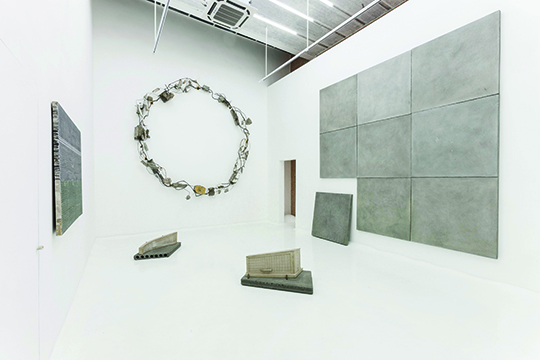BOREDOM IS THE BEGINNING OF ACTION|OMNIPRESENT CONCRETE
| March 26, 2015 | Post In LEAP 31
L-ART GALLERY, CHENGDU
2014.12.20~2015.01.30
HUNSAND SPACE, BEIJING
2014.12.21~2015.02.28

“Boredom is the Beginning of Action” and “Omnipresent Concrete” do not particularly stand out among the exhibitions Lu Mingjun and Bao Dong have respectively curated. But, without meaning to, they share something in common: both are small group shows based on relatively minor points rather than broad thematic discourse (one is based on an idea, the other a material), and both try to present artists’ practices fairly and comprehensively through work already completed or in progress prior to the exhibition. Of course, the works all relate to their exhibitions’ themes—topics that came not from the curators’ own work, but rather arose naturally out of their day to day interactions with the artists. Bao heard at a party that three of the artists present had worked in concrete, and realized there had never been a show to compare work on the topic. The title of “Boredom is the Beginning of Action” came in a conversation Lu had with the artist Gong Jian, who quoted from Wang Hui’s book Six Moments in the Life of Ah Q. When Lu Xun’s “spiritual victories” failed to work for Ah Q, Lu Mingjun discovered the concept of boredom.
In contrast to exhibitions driven by and built around curators’ knowledge systems—something of a modus operandi for Bao Dong and Lu Mingjun—here the artists’ feelings are further taken into account in the conception of the show and selection of works, giving them a greater role in structuring the exhibitions. With interaction between curator and artist, conversations and discussions about the process of building the exhibition took place on a regular basis. Working not only from theoretical knowledge, here the curators also have input from practical experiences of working in the art world.

With strong unifying themes—boredom and concrete—these exhibitions allow for easy comparisons of the subtle differences between individual works. See, for instance, the different versions of boredom in Liao Guohe’s appropriation of vulgar images and tasteless language in his bad painting, contrasted with Lin Ke’s recording of using his computer, laying bare the mundanity of life. Then there is Gong Jian’s 93-minute video of random and disparate material from his own recordings, including a friend’s wedding, chats with a leftist, scenes in a Yunnan bar, someone catching ghosts on the street, and offerings at a temple to the sea deity.
This version of the curatorial allows viewers to reach a detailed understanding of the artists and their work. Bringing related work together and exhibiting it against a shared background emphasizes the differences between individual practices—obviously good news for the market, where unique selling points factor into exchange value. It could also signal a renewed affirmation of the sense of difference that exhibitions theoretically strive for; these shows represent increasingly professionalized curatorial work, a step beyond the empty language that often props up group exhibitions in China. While increasing the stability of the art system, this trend could bring forward an even younger generation of artists by highlighting the convergence of contemporary artistic language and increasing the demand for this kind of meticulously professional kind of exhibition—forming a continuous feedback loop.
If curation is becoming more like a professional service provided to the art world, this is not only an inevitable result of the profession settling down, but also a catalyst for stability in the exhibition system, even as it brings down energy levels across the board.
Translated by Vanessa Nolan

